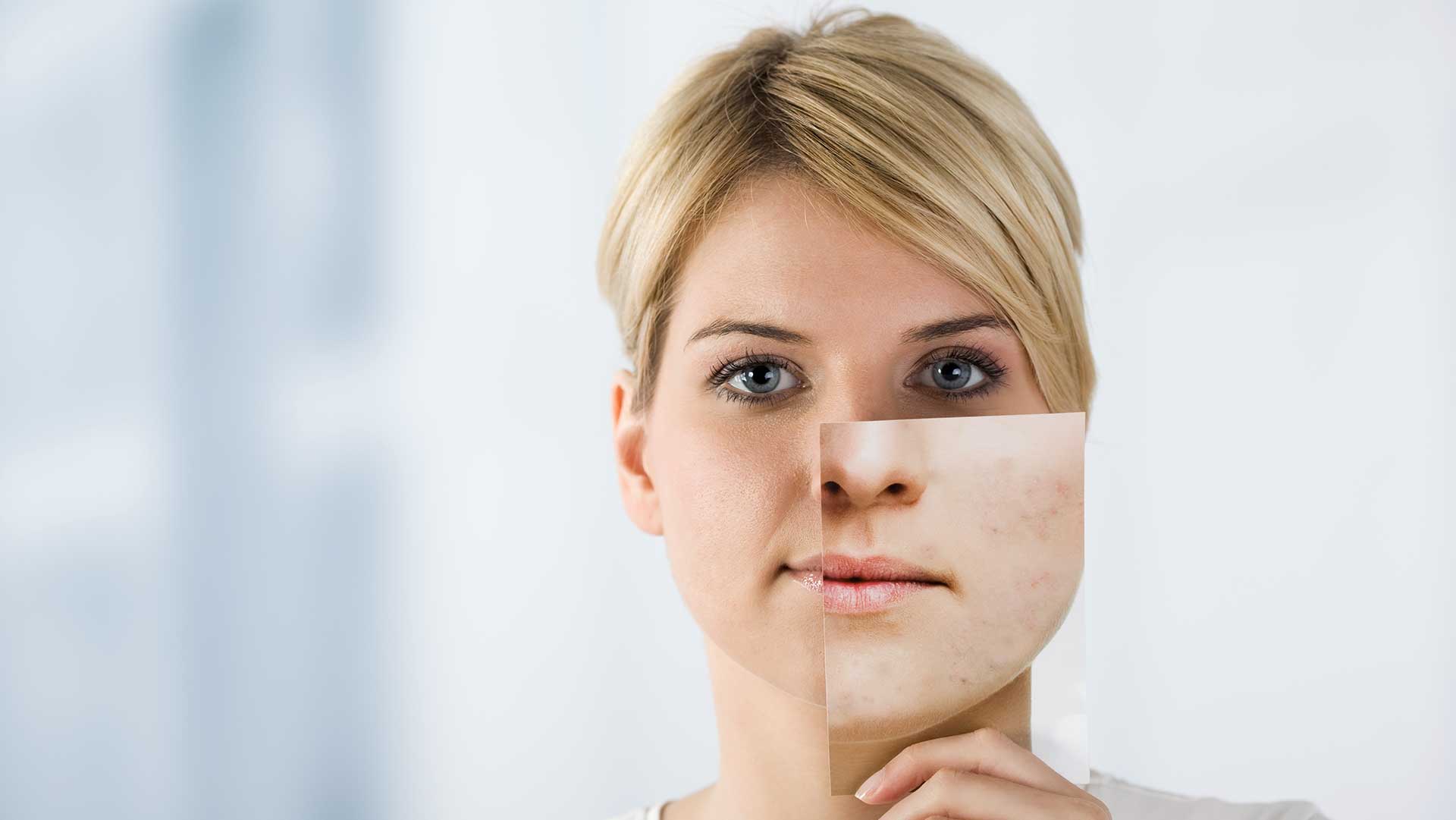As much as we’d like to forget our pimpled past, our faces remember – in the form of scars. From dark hyper-pigmentation marks, pesky red spots to deeper pock marks in the skin, acne scars are among the most dreaded skincare issues.
However, when it comes to treating them, there’s a combined effort of in-salon and at-home treatments that need to be considered. We’ve turned to the skincare experts to see which products they recommend.
How to treat atrophic scars (pock marks)
These occur when the skin doesn’t produce enough collagen while your blemishes are healing, and look indented as a result. Also known as ice-pick scars, these are best treated in clinic by revving up collagen production with more specialised treatments like micro-needling, lasers and chemical peels.
“My top pick for acne scarring like this is the Vampire Facial Plus, $950 per treatment, because of the combination of PRP (platelet rich plasma) used to regenerate the tissues and needling to stimulate the remodelling of scar tissue,” says Dr Cat Stone of The Face Place.
It’s been one of the best combinations they have seen for effectively treating all types of scarring.
“Scar tissue will always be a ‘patch’ of the skin with higher scar collagen levels and few skin cells, but the PRP/HA [hyaluronic acid]/needling combo seems to help convert the scar collagen into more normal collagen,” she says. Subcision (release of the scar) and injection of PRP under the scar can also help to accelerate these changes.
How to treat hypertrophic scars (raised acne scars)
Less common than indented scars, this type (also known as keloid scars) affects mostly cystic acne sufferers, with raised scars that occur due to an over-production of collagen during the healing process.
Often red or pink in colour, the goal is to make the inflammation go away, which can be achieved through injections of steroids by a trained dermatologist. Prevention is important for anyone prone to keloids. Using a scar-minimising treatment before they form can help – but only use on healed skin.
How to treat dark scars (hyperpigmentation)
Dark spots or discolouration are the brownish-red spots left behind due to inflammation from pimples and blemishes. It’s technically not a scar but it is very common, especially in darker skin tones. To lighten these areas, Stone recommends vitamin A as a topical treatment, as well as skin peels and brightening serums.
“The vitamin A product used needs to be tailored to your skin type, so we recommend guidance from an expert medical skin therapist first,” she says.
“Peels are often helpful to increase turnover of skin cells, as people with acne will often have impaired turnover leading to ‘sticky’ skin cells and sebum which block the pores – causing whiteheads and blackheads that then get infected and become acne,” she adds.
Other treatments include glycolic acid products, which remove the uppermost layer of the skin and the dark marks with them over time, and retinoids to increase skin cell turnover.

.jpg)
